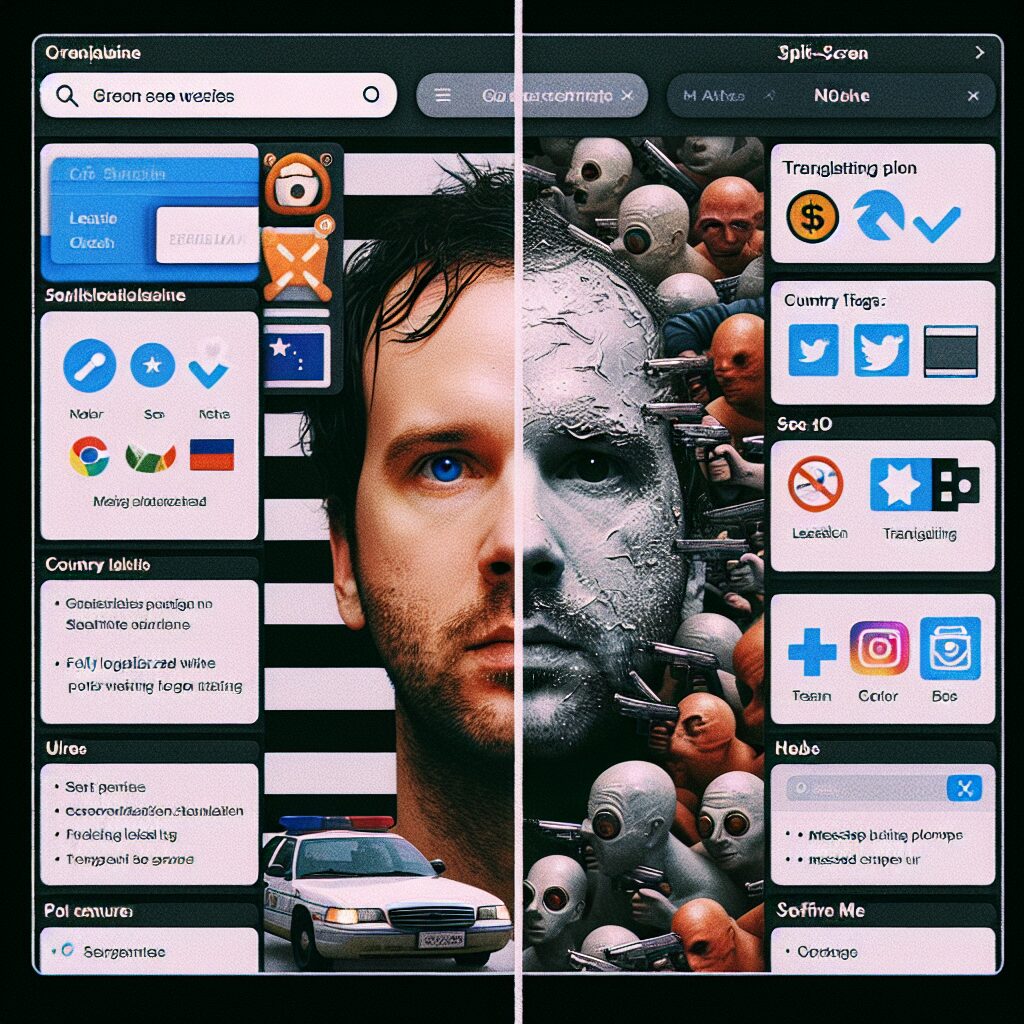About eldris
Clone.Eldris.ai empowers brands to instantly replicate and translate their websites for seamless global expansion. Our automated system delivers SEO-friendly, multilingual clones that launch in days, not months.
In This Article
- Automated website cloning fully mirrors site architecture with SEO intact.
- Translation plugins risk SEO errors due to dynamic rendering and minimal control.
- Proper use of Hreflang, URLs, and meta elements significantly boosts indexing.
- User experience improves with customised regional content through cloning.
- Cloned environments scale better for long-term ROI over plugin-based setups.
- Ensure a careful technical transition plan when moving from plugins to cloning.
The Importance of SEO in Multilingual Website Strategy
Why Search Optimization Matters Globally
In today’s borderless digital economy, businesses are no longer confined by geography. Whether you’re marketing e-commerce products internationally or offering global SaaS solutions, appearing prominently on search engines in multiple languages is imperative. That’s why automated website cloning is becoming a core part of enterprise SEO strategy. Companies need to not only translate content but also ensure that this content ranks well across all relevant search engines. Translation alone is not sufficient— without proper SEO underpinnings, translated content will remain invisible to international audiences. Effective multilingual SEO bridges the gap between language localisation and search visibility, enabling brands to build trust, engagement, and ultimately, revenues across diverse markets.

What Is Automated Website Cloning?
Definition and Core Capabilities
Automated website cloning refers to the process of duplicating an entire website—including its structure, metadata, content, and technical configurations—into other languages or regional variations with full SEO-friendliness intact. Unlike simple translation tools, automated website cloning replicates the architecture of the original site and then adapts it per local language and search engine requirements. This method is often employed to rapidly scale international SEO strategies without compromising on control, accuracy, or performance. Importantly, it includes guidance on Hreflang implementation, correct URL formatting, canonical tags, and cultural localisation, all of which are pivotal for successful multilingual optimisation.
Cloning solutions typically run on parallel infrastructure or headless CMS integrations that allow marketers to manage multiple language versions as if they were native websites. The automation aspect lies in how these systems handle content updates and synchronisation, ensuring that changes on the primary site are reflected across all clones with precision. From an SEO standpoint, automated website cloning ensures that language versions are properly indexed, targeted, and ranked where relevant, giving marketers a strategic advantage over simpler plugin-based translation methods. Learn more about Multilingual Website Localisation and SEO
How Translation Plugins Work for Multilingual Sites
Plugin-Based Language Support Explained
Translation plugins are popular for their ease of setup and low initial cost. These tools, often embedded directly into CMS platforms like WordPress or Joomla, translate existing content either automatically or via manual imports. However, their capabilities are typically limited to content-level translations without extending to underlying SEO foundations.
In most cases, translation plugins generate translated pages via JavaScript or load them through subdirectory paths, which can inhibit search engines from fully indexing them. They often fail to implement proper Hreflang tags, canonicalisation rules, or regional URL structures. Moreover, automatic translations may ignore localisation nuances, impacting both user trust and relevance in search results. While useful for basic multi-language support, such plugins usually fall short for businesses that rely on precise SEO performance across different linguistic markets. Their inability to separate content at a structural level means they are prone to issues like keyword mismatches, URL fragmentation, and indexing delays.
Key Technical SEO Elements to Consider
Hreflang, URLs, Meta Tags & Performance
A multilingual SEO strategy must begin with proper implementation of technical SEO elements. Automated website cloning frameworks are designed with these components in mind, giving them a significant edge over translation plugins.
The use of Hreflang tags is essential for telling Google and other search engines which version of a page to serve based on user language or region. Cloning provides direct control over these tag insertions, ensuring each version is accurately mapped. In contrast, many plugin systems apply generic Hreflang configurations or omit them entirely, leading to traffic misallocation or duplicate content penalties.
Structured, language-specific URLs (e.g., /fr/produit instead of URL parameters or fragments) are another crucial aspect. Automated website cloning naturally maintains this hierarchy because it duplicates the entire domain path. Meta tags—including titles, descriptions, and Open Graph attributes—are also individually optimised in each cloned version, while with plugins these are often shared or minimally differentiated. Finally, web performance remains critical. Cloned sites can be cached and delivered via the same CDNs as the main site, whereas plugins may load dynamically, adding latency.
Comparing the SEO Benefits
Automation vs. Translation Plugins for Rankings
From an SEO return-on-investment standpoint, automated website cloning markedly outperforms translation plugins. One key benefit is the ability to control every page as if it were its own localised entity, giving businesses precise input into how each page is indexed and ranked. Cloning also allows marketers to run separate keyword strategies, backlink campaigns, and internal linking architectures per region.
Moreover, SEO tools often integrate better with cloned sites. Crawlers can access and audit cloned pages like native content, providing accurate health scores and optimisation feedback. This is less reliably achieved with translation plugins, which may veil translated content from bots due to JavaScript rendering or improper tagging. Ultimately, cloned sites have higher probabilities of ranking in local SERPs because they act as location-targeted sites with dedicated SEO frameworks, not just mirrors with translated content.
Localized User Experience and Engagement
UX Impacts on International SEO
User experience plays a critical role in SEO, particularly when considering metrics like bounce rate, dwell time, and conversion. Automated website cloning caters directly to these factors by enabling complete localisation—beyond language. Design elements, CTAs, images, and even navigational structures can be customised per region, ensuring users feel the brand understands and caters to them.
Plugins tend to offer only surface-level translation, which may confuse users when cultural references, currency information, or legal disclaimers are not appropriately handled. Cloned sites empower regional teams or third-party experts to adapt not just language but tone, humour, and value propositions according to each market. Enhanced localisation leads to deeper engagement, which signals higher relevance to search engines and boosts overall rankings and ROI. Read a related article
Cost vs ROI: Which Is More Efficient?
Financial Considerations for SEO Teams
Although automated website cloning systems may involve higher initial investments in infrastructure and setup, the long-term cost-efficiency is significantly better. This is especially true when accounting for scalability, update synchronisation, and reduced reliance on rework caused by poor translation plugin limitations. For large-scale operations managing websites in five or more languages, cloning proves to be a more sustainable and results-driven approach.
Translation plugins may appear cost-effective at first, but issues with indexing delays, broken SEO elements, and degraded user experience often demand additional SEO consultancy, support, and redevelopment. In contrast, the amount of automation embedded in proper cloning infrastructures ensures that SEO teams can focus on strategic optimisation rather than fixing repetitive errors. When considering traffic boosts, ranking improvements, and better analytics clarity, the ROI of cloning far outweighs its upfront costs. Overview of leading translation plugins
Common Pitfalls of Translation Plugins
Duplicate Content, Fragmented URLs
One of the major concerns with translation plugins is the risk of duplicate content. Because these tools often replicate page content without changing critical on-page elements or canonical tags, search engines may perceive the pages as mirrors rather than true localised variations. This can lead to a dilution of link equity and sometimes even ranking penalties.
Additionally, URL fragmentation—a scenario where translated content resides on different parameterised structures—can confuse both users and search crawlers. For example, dynamic URLs like /page?lang=fr are far less SEO-friendly than well-structured cloned paths like /fr/page. Plugins that do not support full path translations ultimately fail to contribute meaningful SEO benefits. Security and compliance concerns may also arise when personal content such as terms and conditions or cookie notices are mistranslated or defaulted to English, creating liabilities. AI innovations in website localisation
Real World Case Study: Cloning In Action
Before and After SEO Metrics
Consider the case of a UK-based B2B software company expanding into five European markets. Initially using a common CMS translation plugin across French, German, Spanish, Dutch, and Italian subdirectories, the firm faced multiple challenges. Their translated pages were not ranking, bounce rates were over 70%, and core web vitals showed loading time discrepancies between localised and original pages. Switching to an automated website cloning platform changed the trajectory.
Within 90 days, cloned sites were fully localised including legal pages, currency settings, and blog posts per region. SERP presence improved by over 400% in non-English markets. Organic sessions also doubled, while bounce rates dropped below 40%. The firm’s SEO team could now independently optimise keywords and campaigns for each geography, without plugin-related limitations. This case illustrates the tangible impact of proper localisation supported through structured SEO tactics enabled best by cloning, rather than makeshift plugin solutions.
How to Transition from Plugins to Cloning
Step-by-Step Migration Strategies
For organisations ready to pivot towards automated website cloning, the transition must be managed systematically. Begin by auditing your current translation setup, identifying content structures, URL formats, and missing SEO tags. Then map them against the cloned site’s required architecture. Next, establish cloned environments either on subdomains or language-specific folders, configuring Hreflang and canonical tags accurately.
It’s critical to use professional human translators or local marketing partners for content revisions during this stage. After cloning the UI framework and data structures, sync CMS or headless integrations to support ongoing updates. Deploy regional analytics and set up internationalised search console profiles. Finally, run pre-launch QA checks for localisation accuracy, SEO tagging, and mobile responsiveness. Post-launch, keep monitoring crawl errors, indexation rates and local SERP rankings to fine-tune performance. With strategic planning, the shift from plugins to cloning can be seamless and highly beneficial.
“We moved from translation plugins to an automated website cloning solution and saw a 120% increase in Spanish organic traffic within six weeks.” — Global SEO Manager, FinTech Company
Final Verdict: Cloning or Plugins?
When it comes to implementing a robust SEO strategy for multilingual websites, automated website cloning emerges as the superior solution. It sidesteps the limitations of translation plugins by providing complete control over technical SEO, true localisation, and scalability. Businesses that opt for cloning lay a stronger foundation for international organic growth, while those that remain with plugins may struggle with irrelevancy, misindexation, and engagement drop-offs. As global competition intensifies, the ability to speak the language of both the user and the search engine has never been more vital—automated website cloning delivers precisely that.
Great guide on automated-website-cloning-vs-translation-plugins-seo – Community Feedback
Does automated website cloning help SEO more than translation plugins?
Automated website cloning can provide fully localised, SEO-friendly sites by replicating structure, intent, and technical elements, which often outperform standalone translation plugins that may neglect on-page SEO essentials.
Are translation plugins enough for robust international SEO?
Translation plugins offer quick language support but can lack in-depth localisation and often miss technical SEO elements like hreflang and clean URLs, limiting international visibility compared to dedicated site cloning solutions.
What are the biggest drawbacks of translation plugins?
Translation plugins may introduce fragmented URLs, duplicate content, and technical SEO limitations, impacting site performance and search rankings for each target market compared to automated, SEO-focused cloning.










